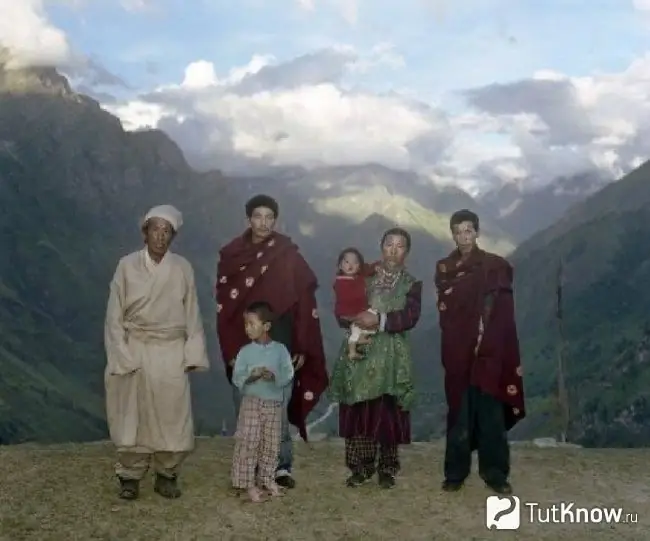What is group marriage? History, place in the modern world, in Russia. Features of the Swedish family as a form of group marriage, children's rights in Sweden.
Group marriage is the coexistence of men and women under the same roof, having common property and leading the same household. It is considered the oldest form of marriage, when a man could have several wives, and a woman - some men.
Group marriage history

The history of the development of marriage relations was given in their works by the American scientist Lewis Morgan ("Ancient Society") and the German philosopher Friedrich Engels. Agreeing in many respects with the American researcher, Engels in his book "The Origin of the Family, Private Property and the State" detailed his views on this issue.
Three stages of development of society - savagery, barbarism, civilization - corresponded to different forms of marriage. Group marriage existed in primitive society, when the life expectancy of a person was very low due to poor living conditions and primitive tools. Men often died hunting or in wars with a hostile tribe for the best hunting and fishing grounds. To survive, one had to "insure" - to have numerous offspring.
Group marriage (polygamy) served as insurance. Depending on the living conditions and customs of the most ancient people, such a union looked like polygamy - one husband and several wives (polygyny), and polyandry (polyandry) - a woman lives with two or three men.
Initially, group marriage was incestuous, with men and women of the same clan entering into indiscriminate intercourse. A father could live with his daughter, a son with a mother, a brother with a sister. The feeling of jealousy was completely absent. This was a period in the history of primitive society, when people lived in herds, had not yet separated from the animal world.
Kinship could only be established on the basis of the mother, the significance of the woman as the founder of the clan prevailed. The era of the primitive system, characterized by such relationships, historians called matriarchy.
Ancient man noticed that incest leads to degeneration. Marital relations between relatives have come under a strict ban. As a late form of group marriage, the punalual (Hawaiian - "close comrade") family appeared, when sisters could have several husbands from a different clan.
With the development of the economic base of primitive society (it became easier to get food), a dual group marriage appeared. Young men, by force or on a contractual basis, brought themselves wives from a foreign clan. It was a coupled family, still fragile due to difficult living conditions. She served as a transitional form to a monogamous stable union based on the leading role of a man.
With the development of the economic model of society, gender relations changed. The institution of marriage has undergone changes. Primitive incestuous relationships were replaced by group marriage in its various manifestations, it was replaced by a pair marriage - an unstable union of a man and a woman. Gradually, he was supplanted by a monogamous family.
It is interesting! Group marriage is currently banned in most countries around the world. In China, it was banned in 1953, in Nepal in 1963.
Group marriage in the modern world

Group marriage in the form of polygamy existed for a long time among some peoples of Polynesia. In Hawaii, back in the 19th century, the leader had several wives. On one of the islands of Fiji, a local tribe held a holiday - group copulation, which lasted several days. Then the ban on the "Sodom" sin came into force. Until next holiday.
The Russian traveler Miklouho-Maclay described the custom of the Guinean Semang tribe, when a married woman, with the consent of her husband, alternately passed to other men. The latter did not remain in debt and also changed their wives.
The primitive tribes in the Pacific Islands and the aborigines of Australia have retained group marriage to this day. In the Australian White and Black Cockatoo tribe, all men and women are considered one large family and are in free relationships.
On the territory of Russia, group marriages among the Chukchi persisted until the middle of the last century. Russian ethnographer V. G. Bogoraz in his work "Chukchi" (1934) wrote that this people has a custom to exchange wives with their distant relatives. Such an exchange allegedly contributed to the strengthening of family ties.
Group marriage among northern peoples is associated with harsh living conditions. In a difficult year for the family, only the support of relatives who have a common wife helped to survive. There was also a custom to "give" their wives to guests. In such hospitality, one can see a primitive primitive exchange: I give you the best that I have, and you give me something good too. When civilization became available to the Chukchi, this "good" could be a pack of tobacco or a bottle of vodka.
Today, modern group marriage in the form of polygyny is a common occurrence in the Muslim East, where it is enshrined in law. According to Sharia, a faithful can have four wives. Each of them has their own responsibilities in relation to the house, a man must support all of them.
In most Islamic countries, girls are allowed to marry at the age of 15. In Saudi Arabia, a 10-year-old girl is considered a bride.
In Algeria, Tunisia and Turkey, polygamy is prohibited by law. To remarry in Iran, you need to get the consent of your first wife. In Iraq, only the authorities give such permission.






